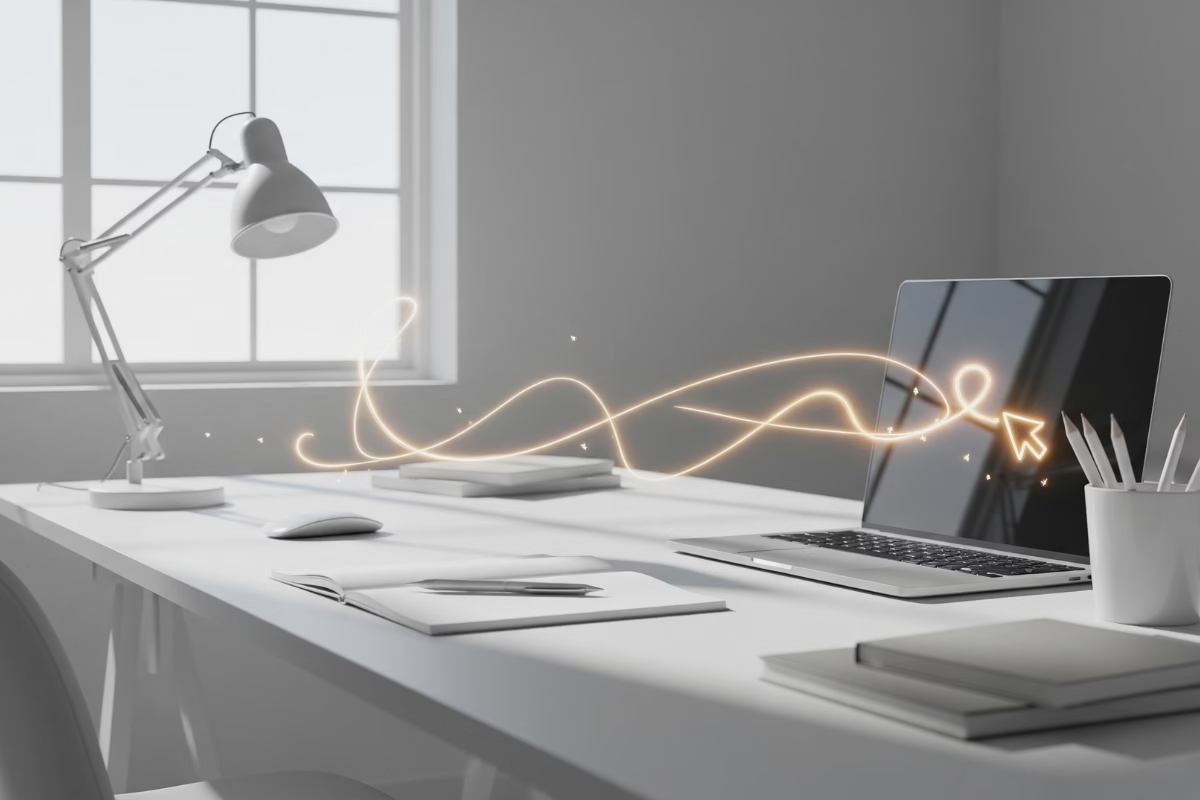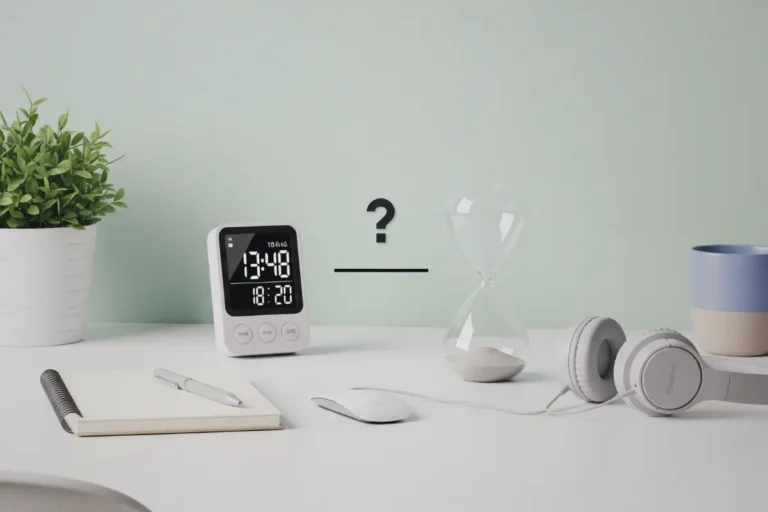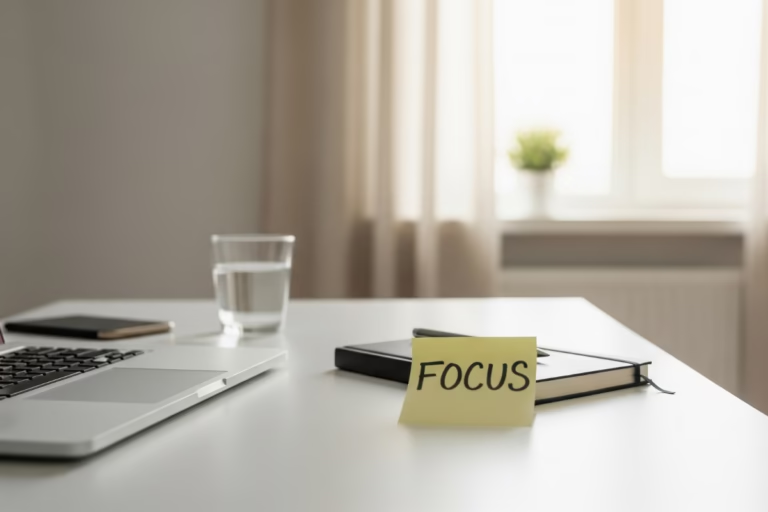How to Enter a Flow State While Working for Deep Focus
If you want to achieve deep focus and meaningful output, start by learning how to enter a flow state while working.
Flow isn’t accidental—it’s built. By mastering your environment, managing inputs, and aligning challenge with skill, you can train your brain to reach this optimal state more consistently. This guide blends deep work, neuroscience, and performance systems to help you reach flow faster and stay there longer.
Whether you’re a creative, entrepreneur, or a high-performing worker, these strategies will sharpen your focus, eliminate resistance, and make peak performance a repeatable part of your workflow.
What Is a Flow State and Why It Matters
The Science Behind Flow and Deep Focus
Flow is a heightened state of concentration where time dilates, distractions fade, and execution becomes effortless. Psychologist Mihaly Csikszentmihalyi described it as the optimal experience—where challenge meets skill at just the right threshold.
From a scientific perspective, entering flow involves a temporary deactivation of the Default Mode Network (DMN), a brain network linked to self-referential thinking and mind-wandering. In its place, task-relevant regions like the prefrontal cortex and motor cortex activate. Neurochemicals like dopamine, norepinephrine, and anandamide surge—amplifying focus, pattern recognition, and motivation.
Flow also correlates with increased alpha and theta brainwaves, which balance relaxation and alertness. This is why deep work and flow are so tightly connected: both require immersion, clarity, and minimal friction.


What Flow Feels Like (And How You Know You’re In It)
When you’re in flow, effort fades. Time stretches or compresses. Self-consciousness disappears. There’s a sense of control—but without control being the goal. Athletes call it being “in the zone.” Writers call it the sweet spot. Everyone knows the feeling, even if they can’t define it.
Key signals include:
- Loss of time awareness
- Elevated clarity and confidence
- A merging of action and awareness
- Reduced internal dialogue
Flow isn’t just a luxury—it’s a performance lever. The better you understand it, the more consistently you can design for it.
Prerequisites for Entering Flow
The Role of Clarity, Challenge, and Feedback
The process of how to enter a flow state while working depends on specific conditions being met. According to Flow Theory, the ideal task sits at the intersection of high challenge and high skill. Too easy? You get bored. Too hard? You get anxious. But when the difficulty slightly exceeds your current ability, you get engagement and growth.
You also need three things:
- Clarity: Know exactly what you’re doing and why it matters
- Challenge: The task should stretch your skills, not overwhelm them
- Immediate feedback: You must sense progress or know what to adjust
These conditions create the tension that triggers deep engagement.
Setting Up Your Mind for Success
Flow isn’t just cognitive—it’s emotional and physiological. A restless or scattered mind will struggle to enter deep states. Before you start working, calm your nervous system.
Use these strategies:
- Practice breathwork or meditation to lower background stress
- Eliminate dopamine spikes before deep work (no scrolling, no hyper-stimulation)
- Anchor your mind with a simple pre-work ritual (like tea, a short walk, or journaling)
Flow doesn’t start with the task—it starts with the transition into it.
How to Enter a Flow State While Working
Use Pre-Work Rituals to Trigger Focus
Your brain thrives on signals. A consistent cue tells it: “It’s time to focus.” Whether it’s sitting in the same spot, lighting a candle, or starting with the same playlist—rituals train your mind to shift modes.
A good pre-work ritual should be short, repeatable, and calming. Over time, the association builds and entry into deep work becomes smoother.
Control Dopamine and Delay Distractions
Most people never enter flow because they’ve hijacked their dopamine system. If you start your day with notifications, TikTok, or email—your brain craves stimulation, not focus.
Delay distractions for the first 90 minutes of your workday. Use tools like Freedom, One Sec, or Cold Turkey to block apps and websites. Give your brain space to settle into rhythm. Control dopamine, and flow becomes possible.
Align Task Difficulty With Skill
To trigger flow, the task must feel meaningful and challenging—but still doable. Break large goals into clear, actionable steps. Choose one to work on.
Ask:
- “Is this just outside my comfort zone?”
- “Can I measure progress within the next 30–60 minutes?”
If it’s too overwhelming, simplify. If it’s too easy, raise the stakes. Set a timer or add accountability. Flow sits in the tension between ease and growth.


How to Create an Environment for Flow
Setting up your environment for flow
Your surroundings either reduce friction—or add it. Make your environment a collaborator in your focus.
Tips:
- Use noise-canceling headphones or ambient music (e.g., Brain.fm)
- Remove unnecessary items from your desk
- Use one monitor, not three
- Set your phone in another room or use do-not-disturb mode
Physical clutter leads to mental clutter. Build an environment that invites stillness.
How to enter a flow state while working in a distracting environment
Not everyone has a perfect workspace. If you’re in a noisy or shared space:
- Use high-quality earplugs or focus playlists
- Establish visual boundaries (facing a wall or using a desk divider)
- Create an “invisible signal” to those around you that you’re in focus mode (e.g., headphones on = do not interrupt)
If distraction is inevitable, shorten your work sessions. Aim for 25–40 minutes of focused work, then recover. Structure beats chaos—even in suboptimal conditions.
How to Stay in Flow Longer
Use Time Blocks and Energy Management
Flow thrives when it’s uninterrupted. Block 90–120 minutes for your deepest tasks. Start with 45–60 minutes if you’re new to deep work.
More importantly, protect your energy. Don’t try to enter flow after a chaotic meeting or a draining conversation. Create a clean buffer zone—mentally and physically—before starting your work block.
Optimize Breaks Without Breaking Momentum
Breaks are necessary—but not all breaks are equal. A break shouldn’t jolt your brain with dopamine (like TikTok or group chats). Instead, opt for:
- Walks
- Stillness
- Hydration or light snacks
- Breathing exercises
These preserve cognitive momentum and avoid the “reboot lag” that comes from high-stimulation breaks.
How to Recover Without Losing Rhythm
After a deep work block, your brain needs decompression. But recovery doesn’t mean wasting time. Use reflection prompts, gentle movement, or analog tools (like sketching or journaling) to close the session.
End each block with:
- What did I complete?
- What’s next?
- Is anything unresolved?
Closure strengthens the habit. It also helps you re-enter flow more easily next time.
Mistakes That Break Flow (And How to Avoid Them)
Multitasking and Context Switching
Switching between tasks kills momentum. Each switch reactivates the Default Mode Network, pulling your mind out of flow.
To avoid this:
- Batch similar tasks
- Keep one tab open (or use apps like Tab Suspender)
- Write down distracting thoughts instead of chasing them
Overstimulated Workspaces
Visual clutter, open loops, and digital notifications create mental static. Flow requires cognitive silence. Design your workspace with intention:
- Remove non-essentials
- Use soft, indirect lighting
- Place inspiring (but not overwhelming) visuals in your space
Misaligned Tasks and Low Clarity
Flow only occurs when you know what you’re doing. Vague goals = shallow focus. Take five minutes to clarify:
- What is the single most important task?
- What does “done” look like?
- What outcome matters most today?
Don’t start work until you can answer those questions. Otherwise, your mind will scatter.


Tools and Systems That Support Flow
Apps for Deep Work and Distraction Blocking
Use software to pre-commit to focus:
- Freedom: Blocks sites across devices
- One Sec: Delays access to addictive apps
- Cold Turkey: Prevents software launches
Set it up once. Let systems handle the resistance.
Soundscapes, Brainwave Music, and Ambient Tools
Music can deepen flow—if chosen carefully. Use platforms like:
- Brain.fm: Scientifically designed music for focus
- Endel: Personalized ambient soundscapes
- Noisli: White noise and nature sound mixers
You may benefit from cutting out lyrics or emotionally charged music during deep work. It depends on your experience with deep work and personality.
Notebooks, Frameworks, and Focus Templates
Analog tools help clear the mind:
- Use a notebook to dump mental clutter
- Keep a daily framework for focus blocks
- Track what triggers flow so you can replicate it
Systems reduce the mental tax of decision-making and increase your ability to perform with intention.
Final Thoughts: Deep Work Starts With Intention
Make Flow Part of Your Identity
Don’t treat flow like a random gift. Build the identity of someone who enters flow by design, not luck. There’s numerous benefits to flow, especially in creative fields. Once you learn to master it you’ll be at a significant advantage.
Affirmations like:
- “I work best in deep, focused states.”
- “My attention is a weapon.”
- “I sharpen focus by design.”
Change how you see yourself, and your behavior follows.
Start Small, Track Progress, Stay Consistent
Learning how to enter a flow state while working is a journey. You don’t need 6 hours of flow to start. Aim for 30 minutes. Track what worked. Refine the process. One hour of true focus beats eight of scattered effort.
Flow is a skill. Deep work is a system. Performance is a choice.
Choose to master it.






